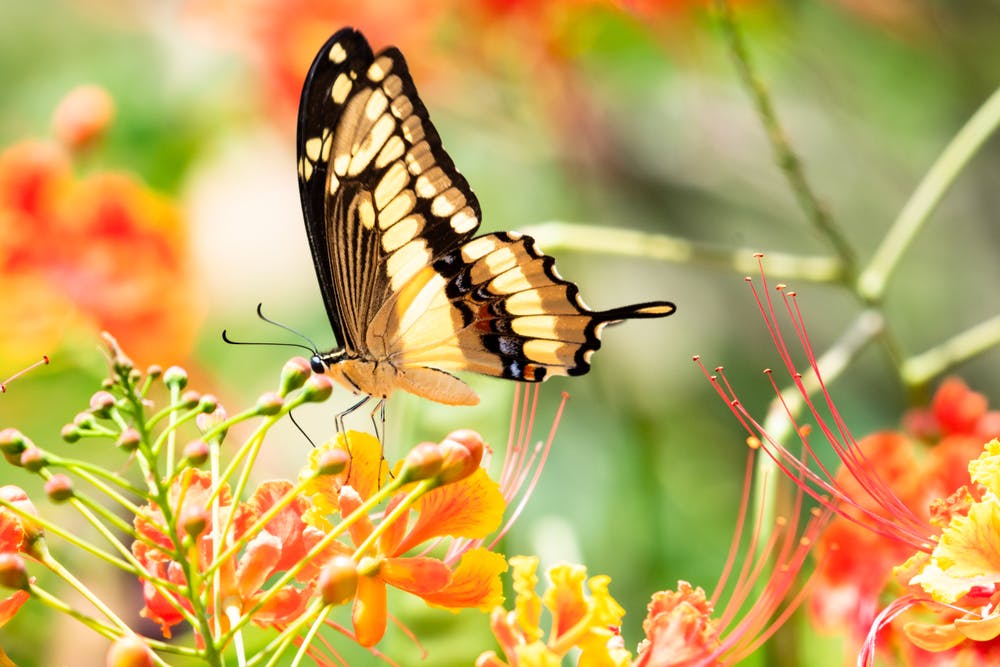What to Do in Barbados, Featuring the Island’s Breathtaking Flower Gardens
Thanks to its 300 uninterrupted years as a British colony, Barbados is the most culturally British island in the Caribbean. Part of that legacy is a wealth of nature parks and gardens that bristle with wildlife. The 166-square-mile island may be small, but its gardens are among the Caribbean’s finest — making them a top option when wondering what to do in Barbados.
Watch green monkeys and jewel-like hummingbirds flit through the verdant foliage. Admire the profusion of showy tropical blossoms and exotic fruits. Stroll along trails under canopies of vast mahoganies or towering royal palms. The island offers an abundance of flowering venues that showcase nature at its best and rank among the best things to do in Barbados. Here are my favorites.
Hunte’s Gardens
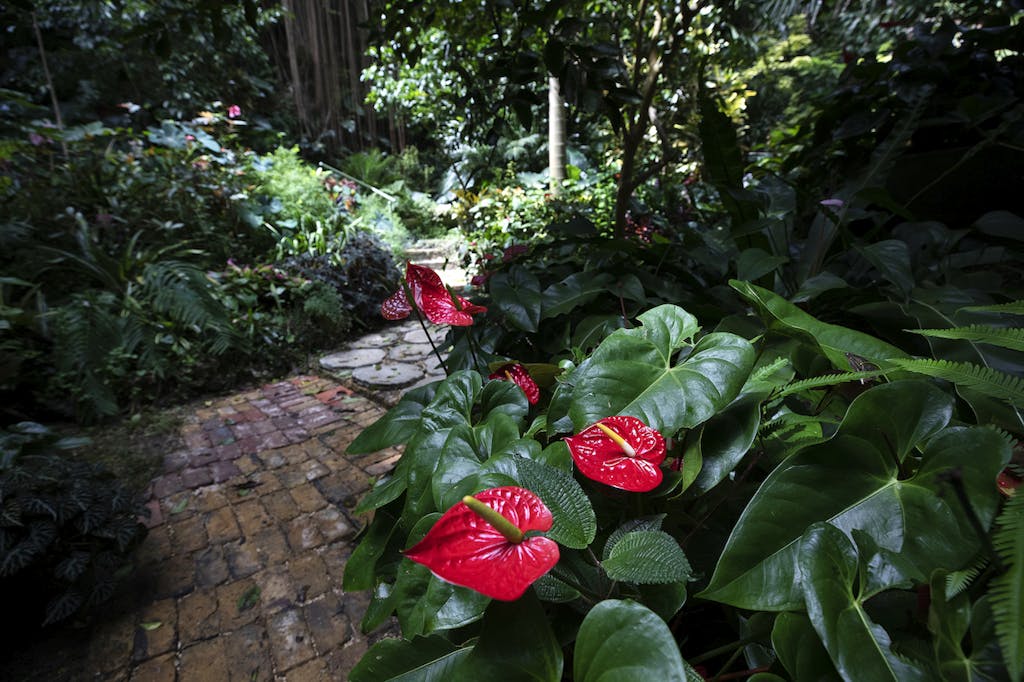
One venue that brings to life the vision of a passionate horticulturist is Hunte’s Gardens. Barbadian Anthony Hunte took an overgrown sinkhole-like gully about 4 miles southwest of Bathsheba Beach and spent two years skillfully transforming it into a showcase of tropical flowers, trees and foliage, including a notable recreation of a Caribbean forest. It’s fun to test your ability to identify the 84 species of birds, flowers and plants (such as purple lily, heliconia and orchids) listed on a large board or available as a handout as you stroll through this tropical oasis shaded by palm trees.
Follow the stone footpaths lined with statues (many depicting Buddha), bird baths and fountains as they snake through the 10 acres of dense vegetation. Spot everything from pots of flowering plants and hardy vines to rare exotic blossoms and 100-year-old cabbage palms reaching for the sky.
The garden is divided into mini-gardens, each one curated to feature the variety of flora. Marvel at the brilliant reds, yellows, purples and oranges of the blooms and at the leaves of every shape, size and shade of green. Relax on one of the many benches strategically placed among the greenery for privacy. And pause to listen to the soft classical music broadcast by Hunte to enhance the experience.
Finally, be sure to meet the creator, who lives on the property and greets guests with tales of how the gardens evolved and with his wealth of horticulture knowledge. Join him for a tropical juice, a rum punch or coffee and cake available for sale.
Hours: Open 9 a.m.-5 p.m. daily
Andromeda Botanic Gardens

Garden lovers who have researched what to do in Barbados flock to this cliffside spot overlooking the town of Bathsheba on the Atlantic coast. Andromeda’s six-acre spread is packed with an array of tropical flowers, shrubs and trees representing more than 90 plant families making it one of the most diverse gardens in the tropical world.
Stroll amid orchids, palms, ferns, frangipani, heliconia, hibiscus, bougainvillea, begonias, cactuses and bearded fig trees (which inspired the island’s name, “the bearded ones”). Wander among a remarkable variety of more than 100 tree species from around the world, some of which are found nowhere else in the Caribbean. Admire its wonderful palm collection and succulent garden.
Watch hummingbirds feed on colorful heliconia and delicate butterflies flit from flower to flower. Listen to birds chirping overhead and inhale the heady perfume of exotic blooms. Relax by a meandering stream that bisects the property, creating pools, waterfalls and a lily pond. Finally, stop at Anna-Lisa’s Café for a taste of local specialties — fish cakes, fried fish and fish sandwiches — and tropical fruit juices and other drinks.
Andromeda, owned by the National Trust was, created in 1954 by Iris Bannochie, the island’s most influential gardener and self-taught scientist. It’s land owned by family has owned since 1740, and it was once was full of sugar cane.
What started as a private collection around her home, gathered during her travels, became a pleasure garden for visitors and a botanic garden to test different plant species from around the world — now numbering more than 500. Her work was even recognized by England’s Royal Horticultural Society. Andromeda practices organic and eco-friendly planting and promotes the conservation of plant biodiversity in Barbados.
Hours: Open 10 a.m.-4 p.m daily., except Christmas Day
Flower Forest Botanical Gardens
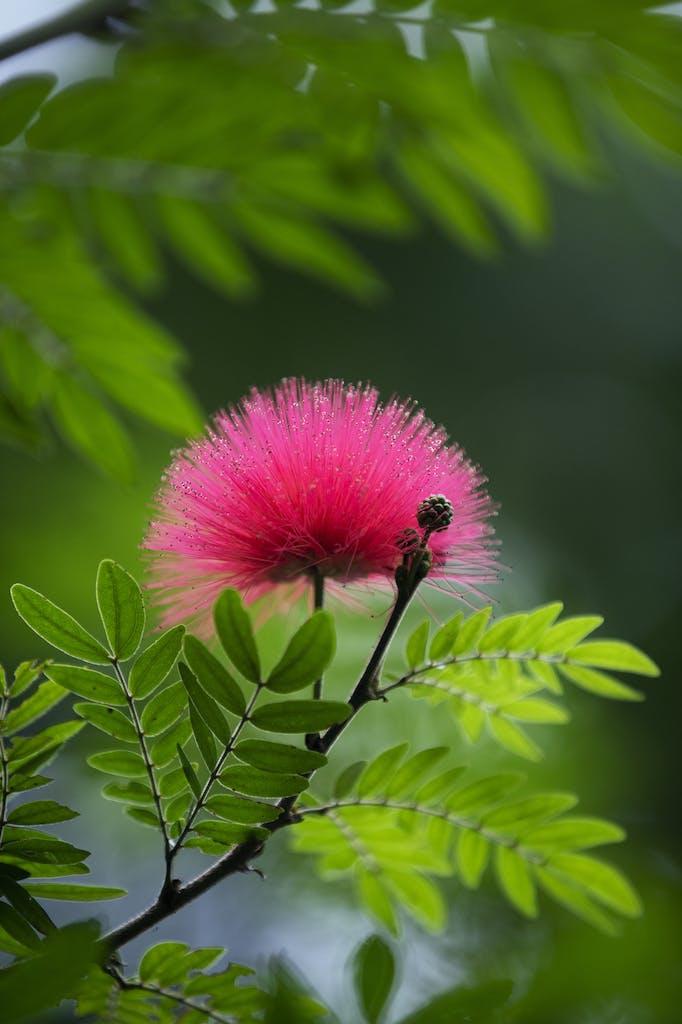
Vibrant, Crayola-hued flowers – anthuriums, bromeliads, petrea, heliconia and ginger lilies – adorn this enchanted forest with their splashes of color, as do Barbados’s three species of hummingbirds, the Antillean crested, green-throated Carib and purple-throated Carib. Located on the old Richmond Plantation sugar estate near the western edge of the Scotland District, the 53-acre Flower Forest Botanical Garden — the largest in Barbados — also bursts with a variety of tropical fruit trees such as Barbados cherry, soursop, guava, breadfruit, nutmeg and golden apple. You can stroll the flower-lined footpaths under a canopy of tall Caribbean royal palms as the trails thread the steep hillside. And you can sigh at strategic lookouts with Insta-worthy views of the distant hills and coastline.
Get a taste of the island’s bounty at the Forest Café, which serves traditional Barbadian dishes. And pick up locally made items from the gift shop, such as frozen ice “lollies” flavored with tamarind, gooseberry, Barbadian cherry, coffee, carrot, and coconut or local sweets like guava cheese and tamarind balls. Take home reminders of this tropical cornucopia in chutneys, pepper sauces and jams sold here.
Hours: Open 8 a.m. to 4 p.m.daily; closed on Christmas Day and Good Friday.
Coco Hill Forest
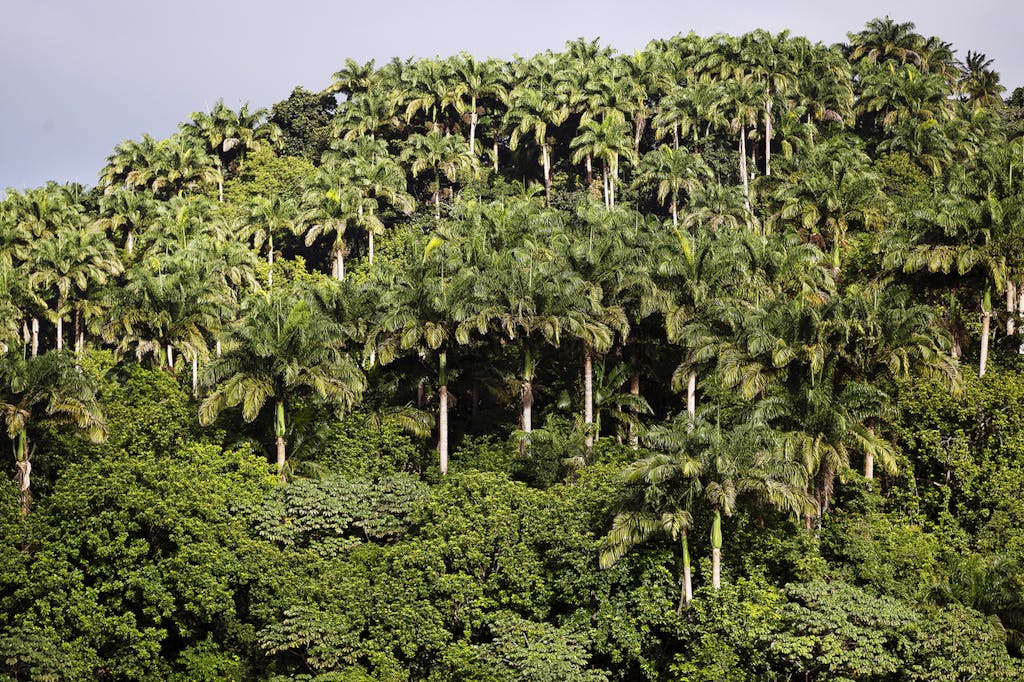
Coco Hill Forest bills itself as a prime spot to enjoy Japanese “forest bathing” – deep immersion in nature to calm and rejuvenate yourself. And with good reason.
Rising to 1,085 feet in the hills of St. Joseph, this lush oasis oozes serenity. The beautiful 53-acre private nature reserve overflows with 80 varieties of trees, more than 1,400 in all. It preserves a bit of Barbados’s original forest, too, with hundreds of royal palms, macaw palms, a rare fan palm, bamboo groves and primordial tree ferns, including some of the tallest native palms left on the island.
Unplug and take an auto-guided or two-hour guided walking tour of the tree-trimmed hiking trails that thread the property like leafy arteries under a canopy of sturdy mahoganies. (A map and walking stick are provided.) Feel the cool tropical breezes and inhale the fresh forest air. Listen to the bamboos creak in the wind. Thrill to the views of the Atlantic Ocean peeking through the foliage at several lookout points. Linger in the gorgeous forest-swathed gazebo.
And learn more about Barbados’ biodiversity via the labeled fruits, spices and herbs, including ackee, coconut, banana, breadfruit, mango, avocado, guava, coffee, cocoa, pineapple, soursop, ginger and turmeric, that will later appear on your plate as part of Barbados’ burgeoning farm-to-table movement.
In fact, Coco Hill was conceived as an agroforestry project, the only one of its kind on the island, by owner Mahmood Patel, a Bajan film producer. Since he bought the land in 2013, he has experimented with permaculture, biodynamic, vertical, edge, terrace and integrated farming methods. In the process, he’s turned land that was undeveloped for more than a century into a food forest, fulfilling a lifelong desire to support the food security of Barbados. He’s even reintroduced some of the traditional crops and vegetation that were once a part of Barbados’s landscape.
Hours: Open 10 a.m.-4 p.m. daily
Tropical Garden
Talk about eye candy: Show-stopping orchids in all their exotic glory take center stage on the six-acre Tropical Garden (formerly Orchid World & Tropical Flower Garden) in the heart of the Barbados countryside. More than 30,000 multi-hued orchids and other tropical plants adorn the garden’s meandering paths at every turn.
Aranda and Spathoglottis orchids bloom in a coral grotto, Vandaceous orchids cling to fences or wire frames, Schomburgkia and Oncidiums climb mahogany trees, and Vandas and Ascocendas, their roots completely free of soil, grow in a simulated rainforest setting. There are Cattleyas and Phalaenopsis and Dendrobiums galore. From snowy white to vibrant shades of yellow, purple, pink, red, green, blue and peach – some with variegated patterns detailing their petals – they sport all the colors of the rainbow.
A small stream flows gracefully over a waterfall before tumbling into a shallow pool below. It adds moisture to the air so necessary for the epiphyte orchids that grow without soil. Its gentle burbling, along with bird songs and trade winds rustling the leaves, form the soothing soundtrack here. Pause for a moment on one of the well-placed benches to admire the flowers or to take in the surrounding sugar cane fields from this hillside perch. On a lovely shaded deck, you can enjoy snacks, cold beverages and other refreshments served from the café. Or pick up a reminder of the garden from the well-stocked gift shop.
Hours: Open 9 a.m. to 4 p.m. Tuesday, Wednesday, Friday, Saturday, Sunday,
Barbados Wildlife Reserve
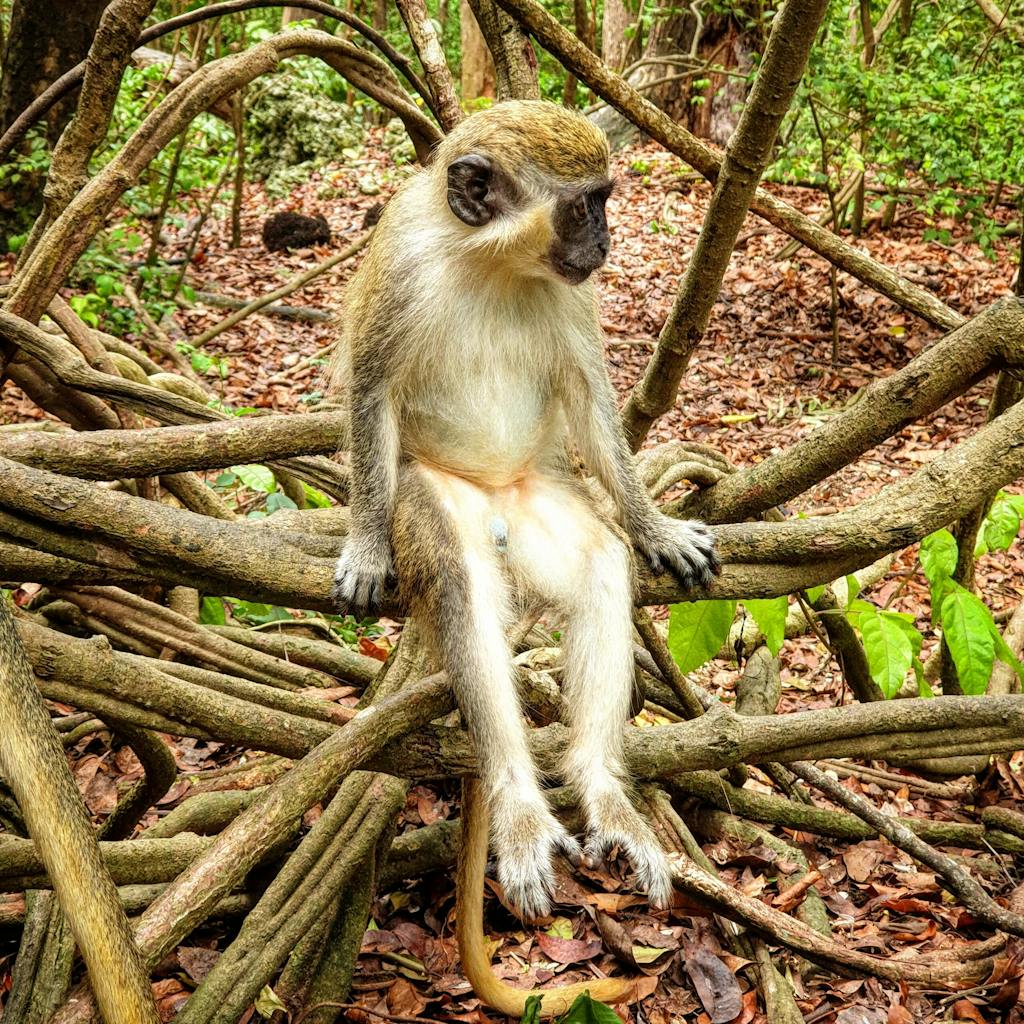
Monkey business is the main attraction here. The reserve, created in 1985 as a sanctuary for the green, or vervet, monkey, is the only one of its kind in the Caribbean. Although the monkeys are called green, they’re actually a dull brownish gray. But
There is nothing dull about these playful creatures. They’re fun to watch eating (especially during their afternoon feeding time), playing and interacting with the other animals. Indeed, while they may be the stars here, they share the four-acre mahogany grove with a host of competitors: agoutis, caimans, deer, peacocks, opossums, rabbits, iguanas, armadillos and tortoises. Not to mention a stream speckled with ducks and geese and a walk-in aviary of tropical birds, including parrots, macaws and parakeets. Well-defined, shady paths lace the reserve.
Originally brought to Barbados from West Africa, monkeys were considered agricultural pests as early as 1680, when a bounty was offered for them. Over the years they continued to damage crops, until the Wildlife Reserve was founded by Canadian primatologist Jean Baulu and his wife, Suzanne, for their humane trapping, management and research.
Hours: Open 10 a.m.-5 p.m. daily,
Folkestone Park & Marine Reserve

Head underwater for another side of Barbados’ natural attractions at the Folkestone Park & Marine Reserve in the historic Holetown area once populated by the island’s first settlers in 1627. The highlight is an artificial reef about a half-mile offshore. It was created by sinking the Greek freighter Stavronikita, which was destroyed by fire in 1976 and now sits in 120 feet of water.
Although it’s recommended only for experienced divers, snorkelers and glass-bottom boat passengers can follow a marked underwater trail along the protected inner reef about one-third of a mile offshore. Ogle the brilliantly colored sea anemones, sea lilies, corals, sponges, fish and other marine life in this tropical garden under the sea.
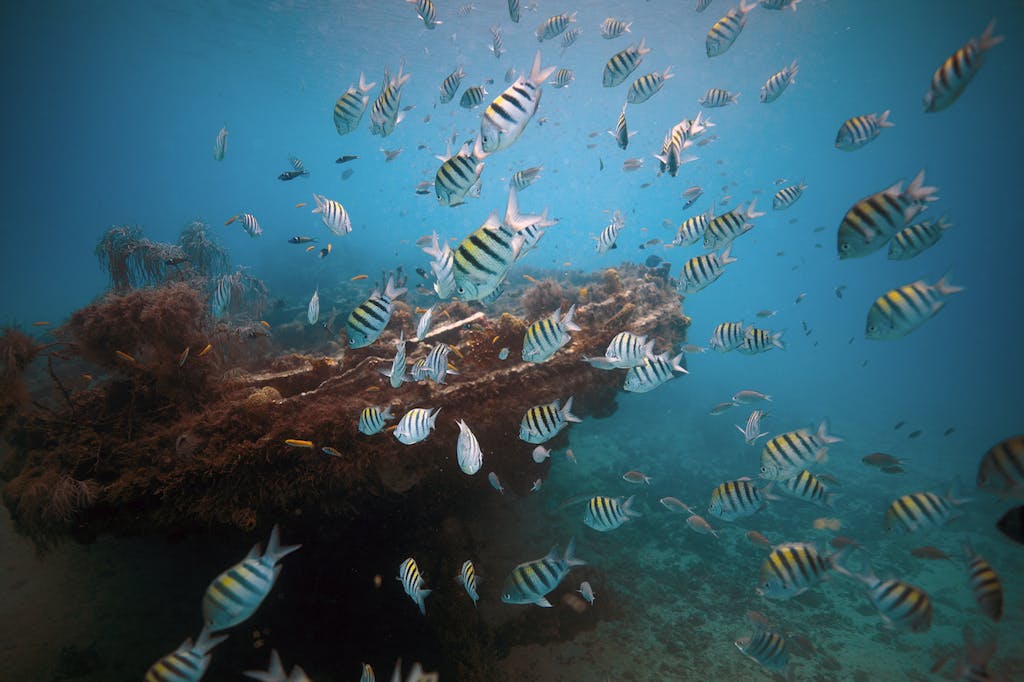
Operated by the National Conservation Commission, Folkestone was created in 1981 as the first and only Marine Protected Area in Barbados. Visitors will find a small marine museum with an aquarium, a souvenir shop and a snorkel equipment rental shop.
Hours: Open daily, 9 a.m.-5 p.m.
Love exploring tropical gardens? Discover these and other floral wonders on a Caribbean sailing.
